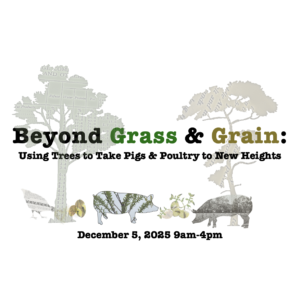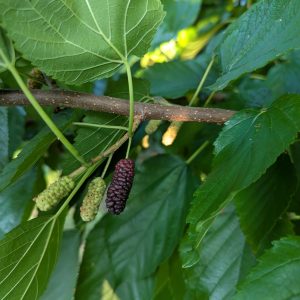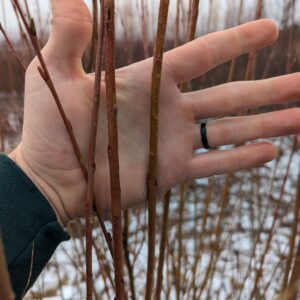Scientific Name: Salix species
Family: Salicaceae (the willow family)
USDA Hardiness Zone: 2-9 depending on type
Size: 80 feet tall
Roots: aggressive, fibrous
Growth Rate: fast
Light: Prefer full sun
Moisture: moist, thrive in flood plains and riparian zones
pH: 4-8
Description: Willows are fast growing, extremely easy to propagate, provide a lot of biomass, and are a natural anti-parasitic medicine. The Salix genus has over 400 species within the temperate region, with hundreds of cultivars all having various uses. Willows are generally fast growing, have dense fibrous roots, and prefer wet conditions with loamy floodplain soils, though some are more adaptable than others. Choose the right variety based on your site conditions, desired form and availability. Willows can be divided into three types: Tree, Osier (basket), and Sallow (shrub). For silvopasture, you’ll want to use tree-form species if your goal is fast shade, and shrub-form species if you want to create low windbreaks or coppiced browse.
Main Silvopasture Uses:
- Fast shade and shelter. In wet soils, nothing will provide shade quicker. Unless you are going to control the size through regular pollarding, consider this a short-term tree providing quick shade until your slower-growing species provide the shade you need. TFG currently uses mostly Austree willow (a hybrid) for fast shade.
- Fodder. Prolific grower, putting out lots of leaf mass that can be used even in the middle of droughts when forages have stopped growing. High in tannins, it is great to offer as a free choice browse feed that livestock can browse as much as needed. Especially value in the diet of sheep and goats, and in contexts where tannins can be used to offset the effects of toxic fescue. The amount of tannins in willow leaves varies by species, and likely is influenced by other factors as well which deserve examination. Leaves also have pain-relieving properties (aspirin was originally formulated from willow).
Other Uses:
- Wood. Generally less useful for wood than poplars. Willows are widely used for biomass plantings, but those would only infrequently interact with silvopasture usage.
- Erosion control and restoration. Similar to poplars above. Have long, intertwining root systems that hold soil together very well.
Special Considerations:
- One of the most easy to propagate from live-stakes. Start with dormant cuttings at least 10” long with half of the cutting underground, growing best in loose soils. TFG has successfully established live stakes as long as 20’ tall (and only planted 2’ deep because of hitting rock!). Once established growth is rapid, recovering quickly from browsing, coppicing or pollarding.



